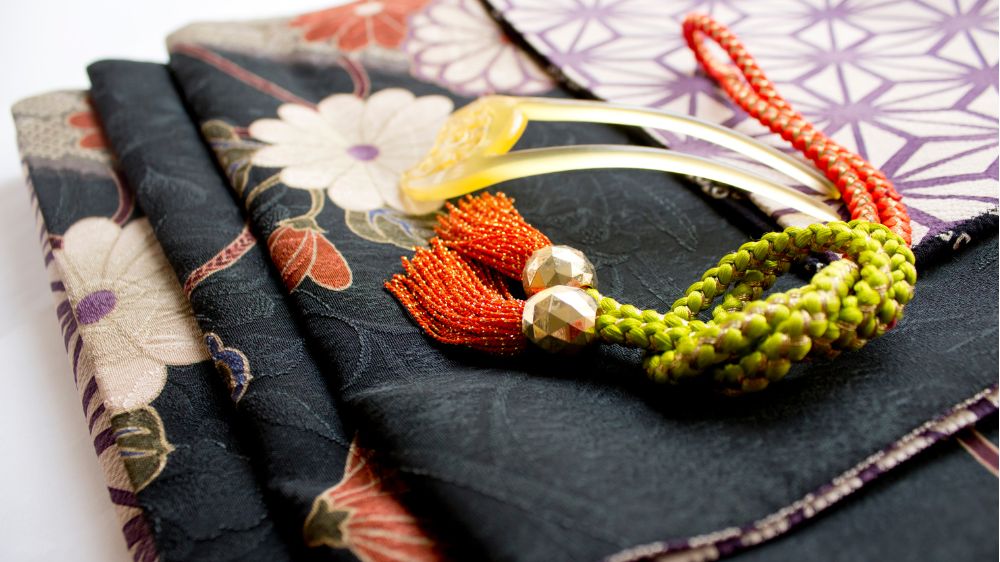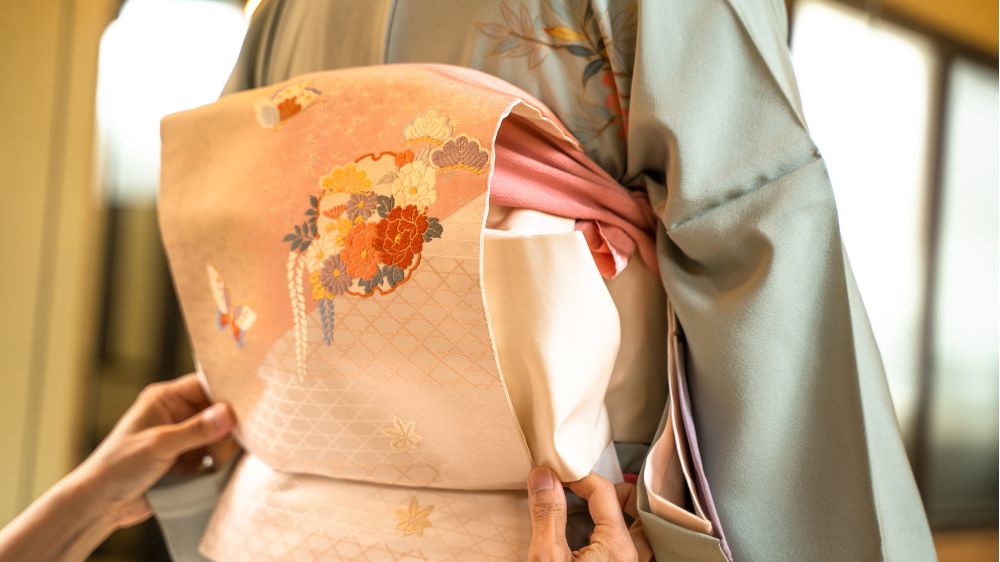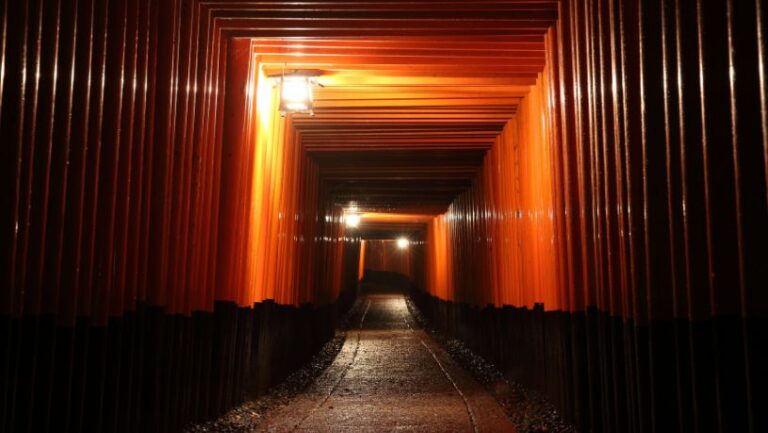Vasara Kimono Rental Sensoji Store Review
Are you curious about renting a kimono in Asakusa but unsure where to start? With so many choices, finding the best experience might seem overwhelming. That’s where Vasara Kimono Rental Sensoji Store comes in! This guide is here to simplify the process for you, covering everything from costs and rental steps to styling tips and must-visit photo spots. Whether you’re a first-time visitor or a seasoned traveler, you’ll find helpful tips based on my real-experience to make your Asakusa adventure unforgettable.
Complete Guide for Vasara Kimono Rental Sensoji Store
Which to Choose: Kimono or Yukata for Sightseeing

Deciding between a “kimono” and a “yukata” for sightseeing? Here’s the rundown: kimonos are made from thicker fabrics, layered for warmth, and have a fancy, elegant look—perfect for spring, fall, and winter outings or visits to formal spots. On the other hand, yukatas are light and airy, ideal for summer and more casual strolls. When exploring the Asakusa area, keep the weather in mind. We suggest kimonos for spring, fall, and winter, while yukatas are best for summer. But if you’re here in Japan, why not go all-in with a kimono? You can snag a yukata for around 10,000 yen as a souvenir, while a kimono (which usually costs around 100,000 yen) requires a bit of help to put on. Wearing a kimono here will make for an unforgettable experience. So, in this article, we’ll focus on kimono rental plans.
How much does it cost to rent a kimono?
Kimono rental prices depend on the plan you pick and any extras. Basic plans run between ¥3,000 and ¥6,000, and prices might vary based on the season. Each rental plan includes dressing services, hairstyling, and accessories, making it a convenient way to experience wearing a kimono. If you’re looking to splurge, there are options for brand-name kimonos and deluxe hairstyles too. Vasara has a range of plans from budget-friendly to options for special occasions. We’ll break down our top plan recommendations below.
How long can I rent a kimono?
All rental plans last until 5:30 p.m. on the same day, so you can wander around Asakusa in your kimono for the whole day! If you’re wearing a yukata and want to extend the fun, you can keep it until 5:30 p.m. the next day for an extra ¥2,200 per yukata. Don’t want to go back to the store to return it? For an additional ¥4,400 per yukata, you can mail it back—just keep in mind Japanese mailing can be tricky if you’re not used to it. Returns need to be back by 5:30 p.m., or you’ll have until 6:00 p.m. with a late fee of ¥1,100 per item. If you’re really late (over 6:00 p.m., and return the next day), the late fee jumps to ¥2,200 per item. Plan your day accordingly to avoid any extra charges!
Can I store my luggage?
Yes, luggage storage is available! Each person gets a zipped bag (40cm x 25cm x 47cm), so as long as your items fit, you can store it. Unfortunately, valuables aren’t allowed. Larger items like carry-on cases can be stored for ¥1,100 per item, but space is limited, so try to arrive early if you’ll need this service.
How long does it take to wear a kimono?
Getting dressed in a kimono takes about an hour per person. For two or more people, plan for one and a half to two hours. With so many kimonos to choose from, you may spend a little extra time picking just the right one! Times can vary depending on the kimono style and plan, so arriving early is a good idea to make sure you have time to enjoy the experience.
Plan Types and Recommendations
Vasara offers a wide variety of rental plans, which can feel a bit overwhelming if it’s your first time. I felt the same way at first! So, I’ve broken down the options to help you decide which plan might be right for you.

Type of Kimono
Let’s start with the types of kimonos available at Vasara. They have six main types: Kimono, Yukata, Visiting Kimono, Hakama, Furisode, and Shichi-go-San. Even many Japanese people can’t always tell them apart, so don’t worry if this seems confusing!
For the purpose of use during sightseeing like this time, I think Kimono, Yukata, and Visiting Kimono are good choices. Kimono is especially recommended because of its reasonable price.
Here’s a quick rundown: Kimonos are usually for spring, fall and winter, on the other hand yukatas are actually more comfortable in summer. The Visiting Kimono (also called Houmongi) is worn for formal occasions, like weddings or visiting someone’s home. It’s a bit pricier but can be worn for sightseeing too. Depending on your budget, you can go for either a Kimono or a Visiting Kimono.
Type of Grade
Each kimono type also comes in different styles, and the price goes up with the grade of luxury: Standard, One-Star, Retro, and Retro Premium. If you find a style you like on the rental day, you can upgrade your choice right there. So, I suggest booking the standard option in advance to keep it simple.
Once you’ve got the basics of kimono types and styles down, the rest is easy! Vasara’s plans are available on Wamazing’s reservation site, and each plan has a Wamazing link, which opens in a separate tab when clicked on, so you can compare and see what you are looking for.
- For one woman renting a Standard Kimono: Go for “Wamazing [Sensoji Temple Store] Walk around Asakusa in Kimono! Kimono Rental, Hair Arrangement & Dressing Plan.”
- For one woman renting a One-Star Kimono: Choose “[Kimono Rental VASARA Sensoji Temple Store] Complete Kimono Rental Plan With Hair Styling & Dressing Service.”
- For one woman renting a Retro Premium Kimono: Pick “[Sensoji Temple Store] Retro Premium Plan: Kimono rental & hair set & dressing included.”
- For families with kids (all kimono grades): Select “[Kimono Rental VASARA Sensoji Temple Store] Family Plan for 3 (Kimono Rental & Hair Styling & Dressing Included)” and add extra children if needed.
- For couples (all kimono grades): Go for “[Kimono Rental VASARA Sensoji Temple Store] Couple’s Plan (Kimono Rental & Hair Styling & Dressing Included).”
- For two women (all kimono grades): Choose “[Kimono Rental VASARA Sensoji Temple Store] Friends Plan (Kimono Rental & Hair Styling & Dressing Included).” If you’re both interested in Retro Premium, it’s cheaper to pick the Friends Plan with Retro Premium than to rent individually.
The plan names on Wamazing are long and a bit confusing, but if you refer back to this list, you’ll have an easier time picking the right one. My tip? Don’t worry about kimono grade in advance—you can choose your favorite one on the spot! For now, focus on who’s going with you when making your reservation.
What to Bring
You’ll need to bring some form of ID, like a passport for travelers. Vasara provides everything you need, including the kimono, obi (sash), tabi (socks), sandals(Zori), and all the accessories needed to complete the look.
Tips for Rental Kimono
When walking around in zori (Japanese sandals), it’s not uncommon to get a few blisters. Even many Japanese people aren’t used to wearing zori, so I speak from experience! I brought a couple of adhesive bandages for quick relief, which made a big difference. To avoid any sightseeing spoilers, keep a couple of bandages handy.
It’s also helpful to bring a handkerchief. After hours in a kimono, your obi (sash) might loosen, and while it won’t fall off, it can start to look a bit untidy. A quick fix is to tuck a handkerchief between the obi for a little added security. Plus, when eating in a kimono, spills can happen, so a handkerchief can be a lifesaver if you need a quick cleanup!
Vasara Kimono Rental Sensoji Store Review
In the following article, I will show you the actual flow of the day I rented a kimono at Vasara Kimono Rental Sensoji Store.

Vasara Kimono Rental Sensoji Store rental flow for the day
Reservation
You can walk in without a reservation, but booking ahead is highly recommended to avoid waiting. Reservations are super easy to make through Vasara’s website or the Wamazing travel site. Both require your name, email, and phone number. Wamazing is designed for international travelers, so it’s often the smoother option. I booked in advance through Wamazing, which has a user-friendly English page—perfect for visitors from overseas. I did have a bit of trouble picking the right plan and kimono type at first, but no worries—I’ve explained the differences above. While you can’t usually pick your kimono ahead of time, there are plenty of beautiful options, so you’re sure to find something you like when you arrive.
After booking, you’ll receive a confirmation email with helpful reminders about what to bring and a few do’s and don’ts. They’re flexible about cancellations and changes, so you can relax if your plans shift a bit. During the peak spring and fall seasons, it’s wise to book at least a month in advance. I booked two weeks early, which worked fine, but earlier is always safer.
One thing I appreciated was being able to pay by credit card when reserving. On the day of my visit, I arrived a little early to make sure everything went smoothly. Thanks to my advance booking, the check-in and dressing processes were quick and easy, leaving us with plenty of time to explore.
Visit
The Sensoji Store is close to Sensoji Temple and easy to reach from the station, making it a convenient stop before sightseeing. When I arrived just before my appointment time, the staff greeted me with a warm smile. At the counter, you’ll confirm your reservation details and show your ID, so it’s handy to have it ready. They also have English-speaking staff, which is reassuring for international visitors.
After check-in, I got to choose a kimono from a wonderful display. There were so many colors and patterns that it was honestly hard to decide! From floral designs to classic prints that blend beautifully with Asakusa’s atmosphere, the selection is impressive. The staff kindly suggested styles based on my preferences, so don’t worry if you’re not sure where to start.Once I picked the perfect kimono, it was time to get dressed. Everything moved smoothly from check-in to dressing—no unnecessary waiting around.
Dressing

Next, I was led to the dressing room, where a professional dresser expertly wrapped me in my kimono. Even as a first-timer, I felt completely at ease. They adjusted the obi (sash) just right for comfort, based on my requests.
The whole dressing process took around 20 to 30 minutes, and I couldn’t help but feel like a character in a classic movie. The obi’s elegant style was especially impressive, adding a unique touch to the look. During the process, the staff shared interesting tidbits about kimono and Japanese culture, making the experience even more enjoyable.
Though I thought a kimono might be tricky to walk in, it was surprisingly comfortable! The staff made sure everything looked perfect before I stepped out, so I was ready to stroll through Asakusa in true style.
Hair Set and Styling
Next up was the hair styling. Vasara’s basic plan includes a standard bun for free, which paired nicely with the kimono. For those wanting more flair, there are other hairstyles available for an additional fee. They have various styles that work beautifully with a kimono, like updos and braids. My wife chose the free style, and the professional stylist did a fantastic job.
We also rented hair accessories, which added that final touch of elegance to our outfits. From simple to more ornate options, there was something to suit every taste. Some are included, while others have a small fee, but the staff was very attentive and happy to help us choose.
The stylist also gave helpful tips on matching makeup and hairstyles with kimono, which will come in handy if we ever dress up in one again. From start to finish, the entire dressing and styling process took about an hour.
Accessories
To complete the outfit, we chose accessories like the obi, a small handbag, and sandals—all included in the plan! A few premium accessories were available for an extra fee, so if you spot something special on the day, you can add it to your look.
Wearing zori (traditional Japanese sandals) was a fun experience. It felt a bit different from regular shoes, but once I got used to them, they were surprisingly comfy. Still, I’d recommend bringing a bandage just in case.
With my outfit complete, I was ready to explore Asakusa. The attention to detail at Vasara was impressive—even the smallest accessories were thoughtfully provided.
Sightseeing

Finally, we headed out to explore Asakusa in our kimonos. With Sensoji Temple, Kaminarimon, and Nakamise Street all within walking distance, we enjoyed taking photos and soaking up the historic atmosphere. Wearing a kimono really made me feel like I’d stepped back into the Edo period!
People stopped us frequently to chat and take photos, which led to some fun exchanges with both Japanese and foreign tourists. The kimono seemed to spark a lot of warm interactions, and we received so many lovely compliments along the way.
Surprisingly, wearing a kimono also made it easy to adjust to the temperature, and I didn’t feel tired from walking around. We took a break at a local tea shop, where we could fully enjoy the relaxed, nostalgic feel of Asakusa.
Return
After a full day of sightseeing, we returned to Vasara to drop off our rentals. The staff helped us out of the kimonos, making the changeover smooth and quick. From start to finish, the return process was easy and convenient.As we left, the staff sent us off with a smile, saying, “Please come back again!”—a heartwarming end to our experience.
Vasara’s service is incredibly thoughtful, down to the last detail, making it easy for first-time kimono wearers to enjoy the day worry-free. I was especially grateful for the quick return process and the supportive staff, which made it feel like a perfect end to a great day in Asakusa.
Top Sightseeing Spots Around Sensoji While Wearing Your Kimono


If you’re dressed in a kimono at Sensoji Temple, you’ll find some incredible photo spots like Kaminarimon (Thunder Gate), Nakamise Street, Sensoji Temple itself, the Asakusa Culture and Tourism Center, and the rows of cherry blossoms along the Sumida River. Each of these places has a historical charm that makes it the perfect background for your kimono look. Experiencing Asakusa while in traditional attire creates unforgettable memories, even if it’s your first time in the area!
Tip: Many stores do not accept credit cards, so bring cash.
Is it Worth Renting a Kimono?
Renting a kimono is absolutely worth it for anyone wanting a truly unique experience in Japan! It’s not only for snapping photos at famous spots; it’s a wonderful way to share a piece of Japanese culture with your loved ones. Wearing a kimono offers a rare opportunity to feel connected to Japan’s history through its traditional clothing. If you want to soak up the atmosphere of Asakusa even more, this is an experience you won’t want to miss.
Vasara Kimono Rental Tokyo
Vasara has locations at top sightseeing areas in Tokyo, including the main Asakusa store near Sensoji Temple, as well as stores at Asakusa Station, Ikebukuro, Ginza, Shinjuku Station, Shibuya, and Akihabara. So, if you’re considering donning a kimono at other Tokyo hotspots, Vasara’s got you covered!
Best Kimono Rental: Vasara Kimono Rental Sensoji Store

Vasara Kimono Rental Sensoji Store is the perfect way to bring a splash of color to your Asakusa sightseeing, especially if it’s your first trip to Japan. Strolling through the historic streets of Asakusa in a kimono can turn an ordinary day of sightseeing into a truly special experience. Let’s recap why Vasara is such a fantastic choice!
- A Range of Plans at Reasonable Prices
At Vasara, you’ll find plans to match any budget or purpose, from standard to premium options. Whether you want an extra fancy kimono for a special occasion or an affordable plan for a casual day out, Vasara has something for everyone. Wamazing is designed for international travelers, making the booking process smoother.* - Prime Location and Smooth Process
Located right by Sensoji Temple, Vasara makes it easy to pick up your kimono and start exploring immediately. The rental process and returns are straightforward, so you can make the most of your time sightseeing. - Friendly Staff
With English-speaking staff on hand, even first-time visitors can enjoy the experience without stress. The friendly team will guide you through choosing and wearing a kimono, so you’re never left wondering what to do. - Authentic Accessories and Hair Styling
Vasara offers a wide selection of accessories like obis, bags, and hair ornaments, plus optional hair styling to complement your kimono style. Ideal for those who want to look their best in photos!
With its easy rental process, great location, and thoughtful details, Vasara Kimono Rental Sensoji Store gives you a high-quality kimono experience, adding an extra layer of magic to your Asakusa visit. It truly is the “best choice” for making unforgettable memories on your Asakusa adventure.






